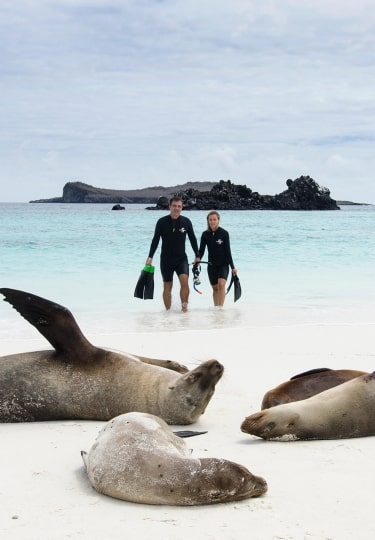The volcanic Galapagos Islands, known for their stark landscapes, pristine seas, and incredible wildlife, straddle the Equator. As such, this is a fantastic year-round destination. The best time to visit the Galapagos depends on what experiences you’re most looking forward to.
While some of the many species of animals and birds are migratory, most are here all the time, from sea lions to marine and land iguanas, blue-footed boobies, frigatebirds, and sea turtles. Every month brings compelling reasons to visit the Galapagos, whether you’re interested in hiking over lunar landscapes of spiked lava and tumbled black rocks, or snorkeling in warm, crystal-clear waters in the company of penguins and rainbow-hued tropical fish.
Essentially, there are just two seasons: cool and dry, from June to November, and warm and wet, from December to May. Everything is relative; this is a climate undisturbed by hurricanes or extremes of climate. The weather is influenced by ocean currents, and you’ll rarely encounter temperatures below the low 60s or above the upper 80s.
The wetter season doesn’t mean constant rain; you’ll enjoy hot days and sporadic, cooling showers. And the cooler season isn’t cold—you can still swim and snorkel in a lightweight wetsuit. So whatever your specific interest or wildlife wish-list, here are the best times to visit the Galapagos.
Best Time to Visit for Hikers
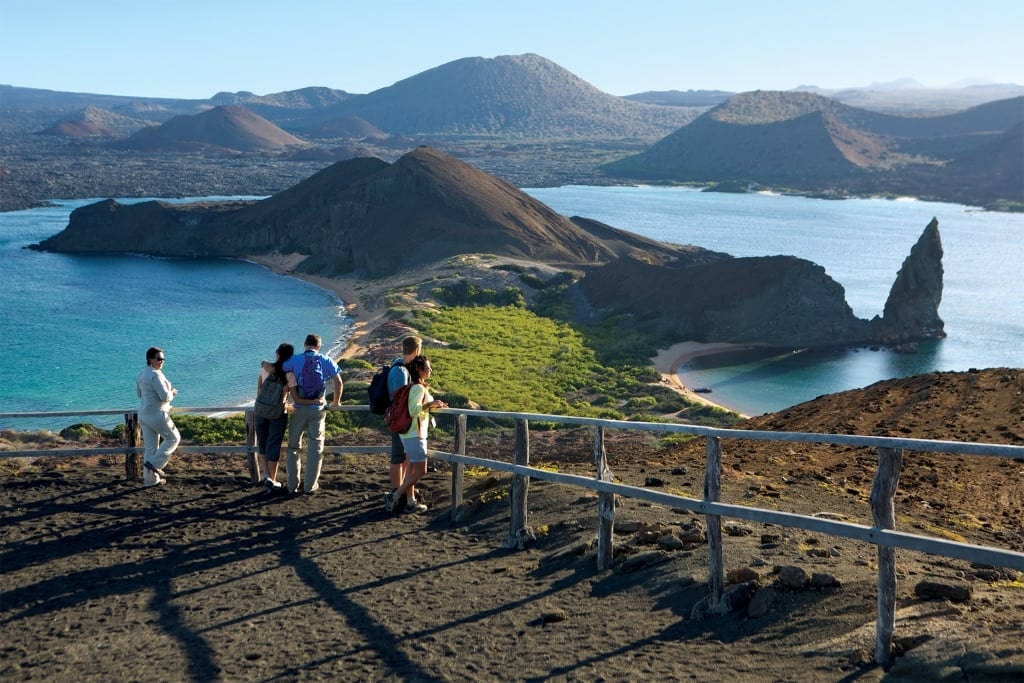
Bartolome Island
You can hike all year round in the Galapagos, and guided walks ashore according to ability and interest are offered every day on a Celebrity Cruises expedition.
If hiking is an important part of the adventure for you, the cooler season, June to November, is the best time to visit the Galapagos. The rains have eased off now, and the islands are lush and green. More food means more active wildlife, too.
In June, mornings may be eerily misty, as the seasonal garua fog drapes over the palo santo trees and giant cacti before burning off in the sun. Birds are particularly active around now, especially the frigatebirds. You’ll see the black males puffing out brilliant scarlet pouches in order to attract a mate until June.
Come a little later, in July, and you’ll see blue-footed boobies nesting and tending their chicks, flightless cormorants performing their own courtship dance, and lava lizards doing what looks like press-ups, bobbing their heads as they look for a mate.
Best Time to Visit for Snorkeling
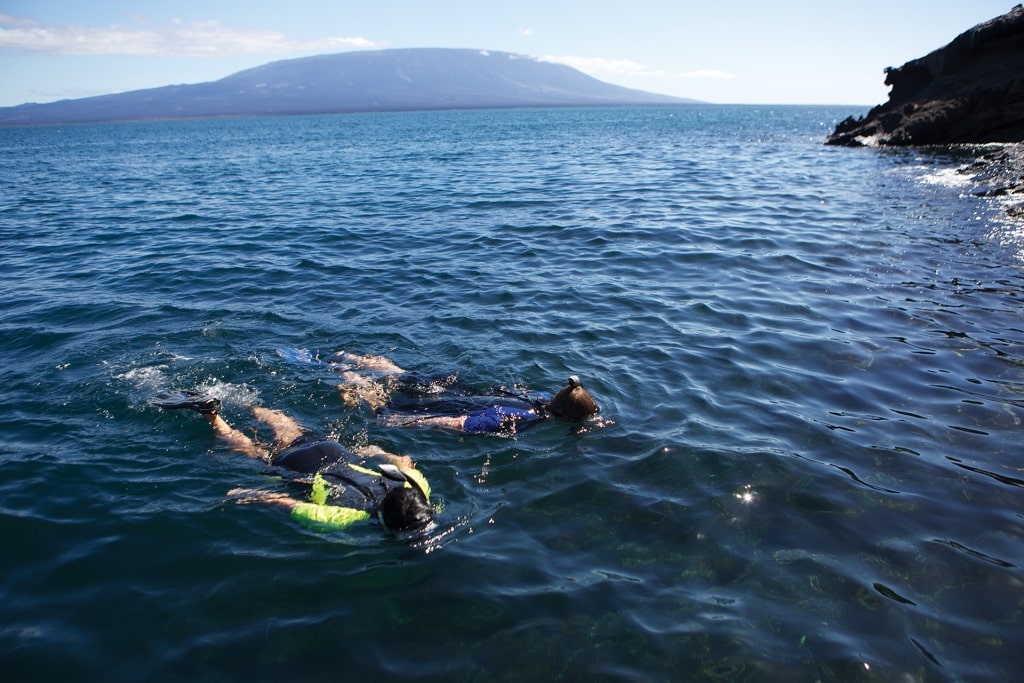
Isabela Island
Aim for the warm season, December through May, if you’re a keen snorkeler. By now, the northern Panama current will have heated the ocean up to the balmy mid-70s, and relatively calmer seas mean wonderful clarity in the deep, pristine waters—up to 100 feet in places.
You’ll be able to drift, carried gently by the currents, over underwater landscapes spiked with black lava rock, watching shimmering shoals of fish go about their business and looking out for the shadowy figures of white-tipped reef sharks weaving across the ocean floor. Eagle rays flit across the sand, while graceful sea turtles drift through the blue depths and prehistoric-looking marine iguanas, nimble underwater, dive down to feed on seaweed.
Come in March, the hottest month, and you can spend hours in the water. Isabela Island is a great place to snorkel among dazzling tropical fish combined with the surreal experience of cute, black-and-white Galapagos penguins zipping around you like bullets underwater.
You can snorkel in the Galapagos all year round, of course; typically, a day on Celebrity Flora would include both a shore-based activity, like a hike, and a chance to jump in the water to admire the incredible undersea world. A lightweight wetsuit is available for every guest.
Best Time to Swim With Sea Lion Pups
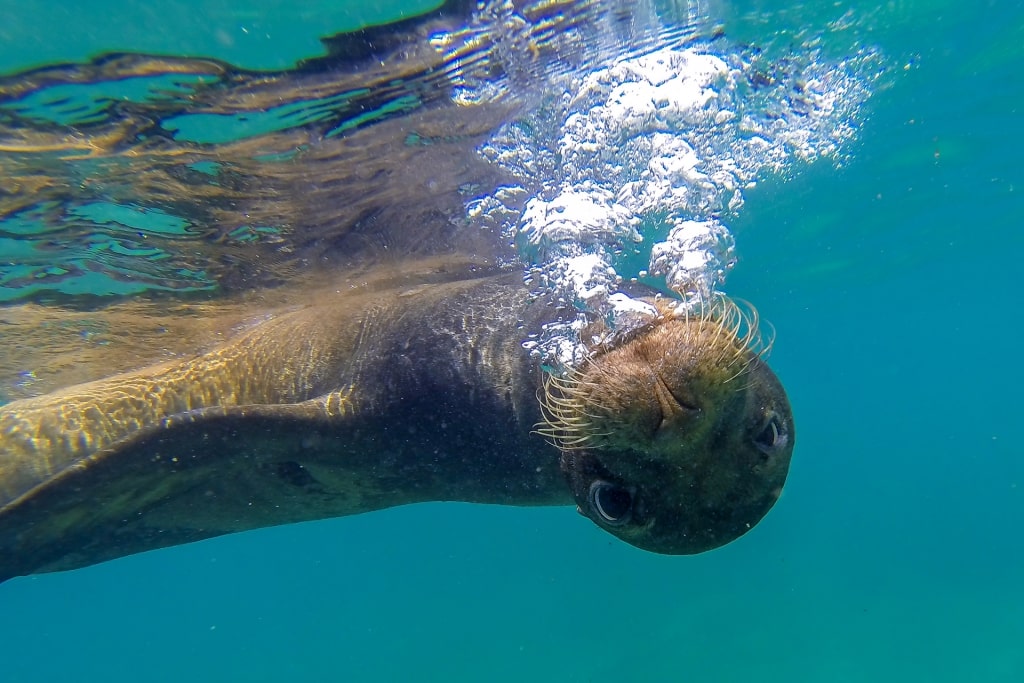
Sea lion
Nothing inspires a sense of connection with nature as much as the experience of swimming with playful juvenile sea lions. They’re like big, mischievous puppies and love nothing more than swirling around snorkelers, zipping above and below like torpedoes, nipping at your fins, staring at you through your mask, and showing off their incredible agility under the water.
Champion Islet on Floreana is a particularly good spot for swimming with sea lions, as there are large colonies here. The breeding season is long, but fuzzy, big-eyed pups start appearing around August, raised in big nurseries on the sand. By November, the baby fluff of this generation has given way to a sleek coat and the pups have taken to the water, testing their fishing skills and looking for fun. If bonding with juvenile sea lions is top of your list, this is the best time to visit the Galapagos.
Read: The Ultimate Guide to Visiting the Galapagos With Kids
Best Time to Spot Whales and Dolphins
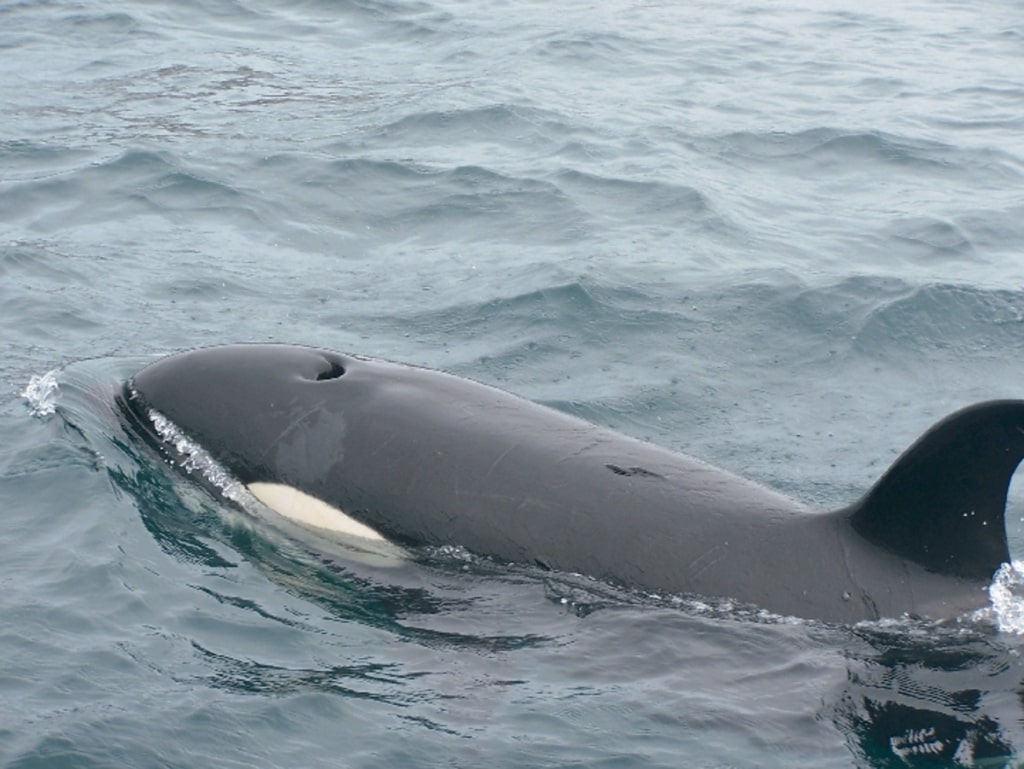
Orca
The Peru and southern Humboldt currents influence the cool, dry season of June to November, the ocean cooling down to around 66 degrees Fahrenheit. These currents stir up plankton and other nutrients, bringing great numbers of marine mammals, drawn here to feed.
Humpback whales migrate through the islands, known for their acrobatic breaching, sometimes leaping right out of the water. You should spot common and bottlenose dolphins around Isabela and Fernandina islands, sometimes riding the bow wave of your ship.
Minke, sei whales, and the colossal blue whale, the world’s largest mammal, are also seasonal visitors during the cooler months, while there’s a chance of spotting sperm whales and pods of black-and-white orcas year-round.
Best Time to Visit for Romance
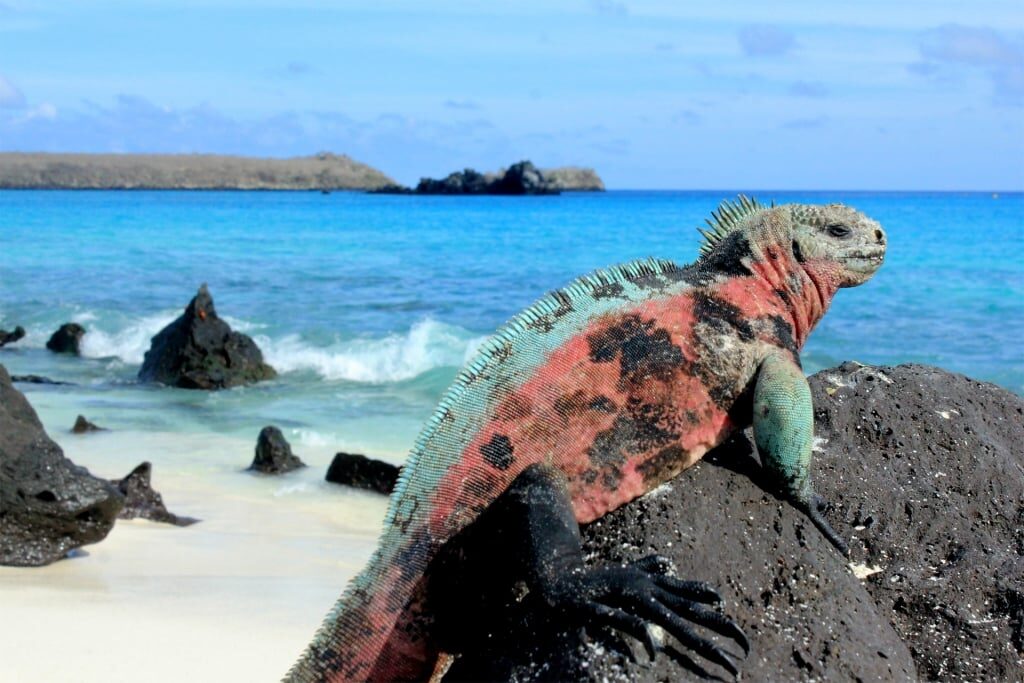
Marine iguana
Not your own romance, necessarily, although those blazing sunsets and the shared experience of exploring this incredible place on an expedition vessel is unfailingly romantic.
The business of finding a mate is in the air all over the Galapagos in January, February, and March, the breeding season for many of the creatures that inhabit the seas and islands. This is when sea lions, sea turtles, and tortoises are breeding or nesting against a lush landscape carpeted in wildflowers.
Marine iguanas on Espanola Island take on vivid colors of scarlet and green to attract a partner. You’ll witness blue-footed boobies performing their curious courtship dance. The male presents his intended with a gift of a stick or a pebble and then struts around her, showing off the bright blue of his feet. The more intense the color, the more virile the bird.
You may also see green sea turtles clambering up sandy Galapagos beaches to lay their eggs in the sand, a sight that’s a privilege to witness.
Best Time to See Baby Animals
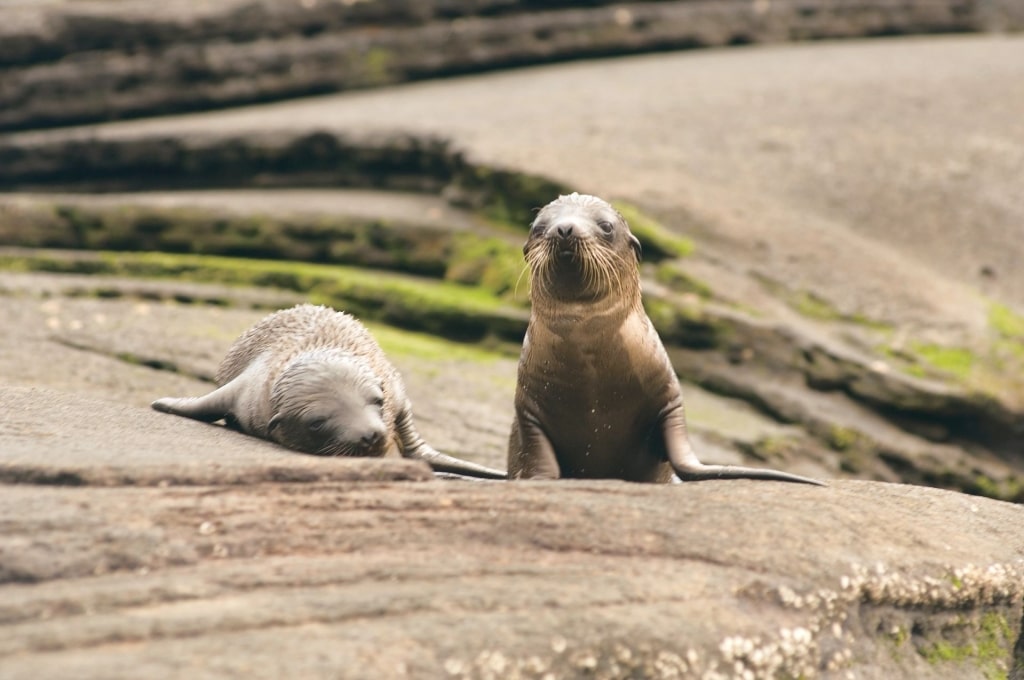
Sea lion
If January to March is the mating season for many species, plan a visit to the Galapagos in April or May to witness the next phase of the circle of life. In April, green sea turtles begin to hatch, thousands of babies scrambling under the moonlight from sandy nests high up the beaches of Punto Cormorant and Gardner Bay, racing for the water’s edge and the relative safety of the sea.
Giant tortoise babies hatch in April; you can see them at the breeding centers on San Cristobal and in the misty highlands of Santa Cruz islands. Iguana hatchlings also emerge around now—land iguanas on Isabela island and their marine cousins on Santa Cruz, each baby an exact replica of the prehistoric-looking adults.
Best Time to Avoid the Crowds
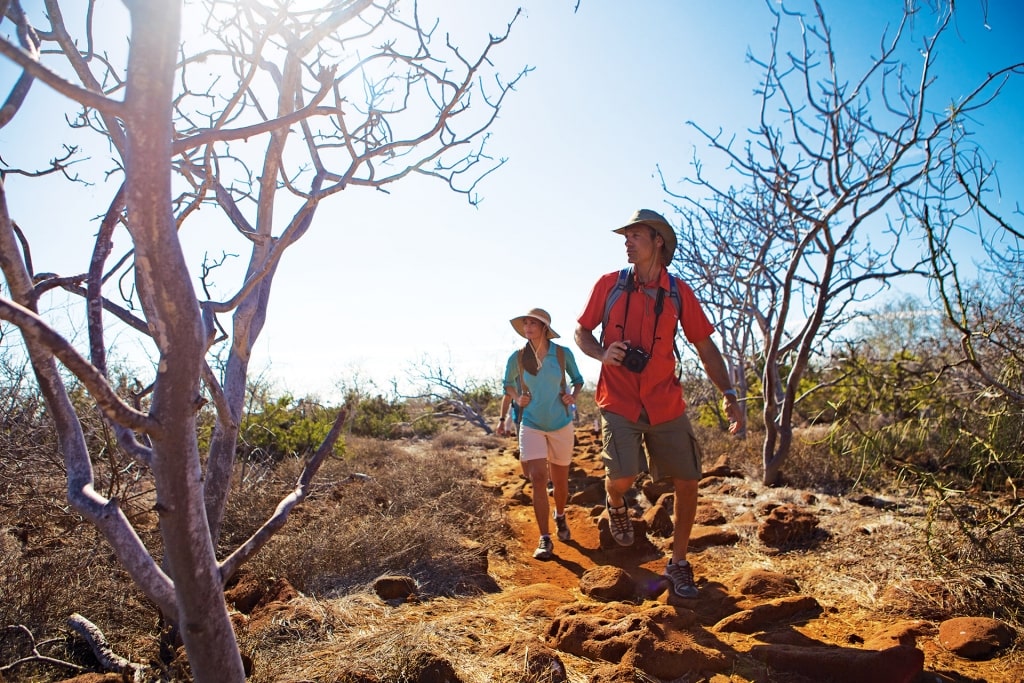
You’ll never really feel a sense of crowdedness in the Galapagos; exploration by ship is highly structured by the National Park authority and there will only ever be one ship in each location at a time.
This is to avoid putting stress on the landscapes and animals, and it also provides the best experience for visitors. Having said that, peak travel time is Christmas, Easter, Spring Break, and the Northern Hemisphere’s summer vacation, as the Galapagos is such a great family destination.
So if you want to avoid a slightly busier time in buzzing little towns like Puerto Ayora—one of the few population centers you’ll see during your visit—or if you perhaps want to extend your expedition with a few days in a lodge, aim for early December, before the Christmas rush. Early January, when the Christmas peak is over—and the weather should be perfect—and September, after the summer surge, are also good times to go to the Galapagos.
Best Time for Bird Watchers
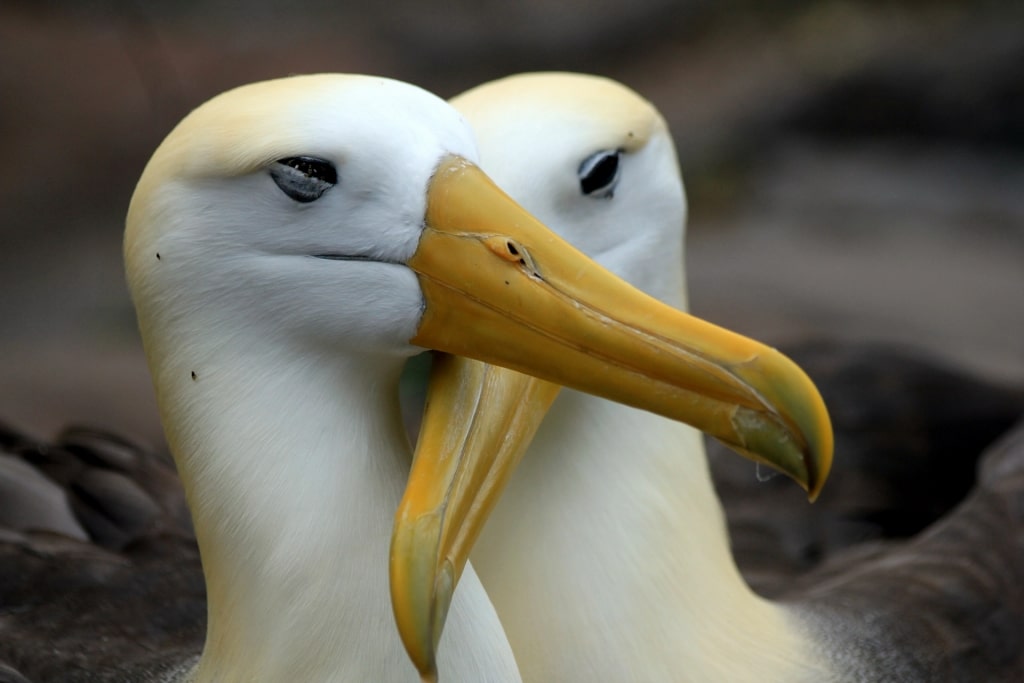
Waved Albatross
With 56 native species of bird, 45 of which are endemic, birdwatching is evidently one of the best things to do in the Galapagos Islands. Every month is a good time to come, and because the birds have no fear of humans, the opportunities for keen photographers are limitless.
For most birders, the jewel in the crown of the islands is the graceful waved albatross, only found on Española Island, where they nest. The adult albatross, which have an incredible eight-foot wingspan, arrive in late March and lay eggs between mid-April and the end of June.
By the end of December, when the chicks have fledged and taken off to spend the next six years at sea, gliding low over the ocean waves, the whole population departs for three months. So April is arguably the best month to see these impressive Galapagos birds up close.
If you’re lucky, you’ll spot some pairs of albatross engaging in a bizarre courtship ritual, a dance that involves each couple clashing their long, yellow beaks together, head bobbing, honking, and strutting. Blue-footed boobies and frigatebirds are also courting around this time, each with their own peculiar display.
Best Time to Visit as a Family
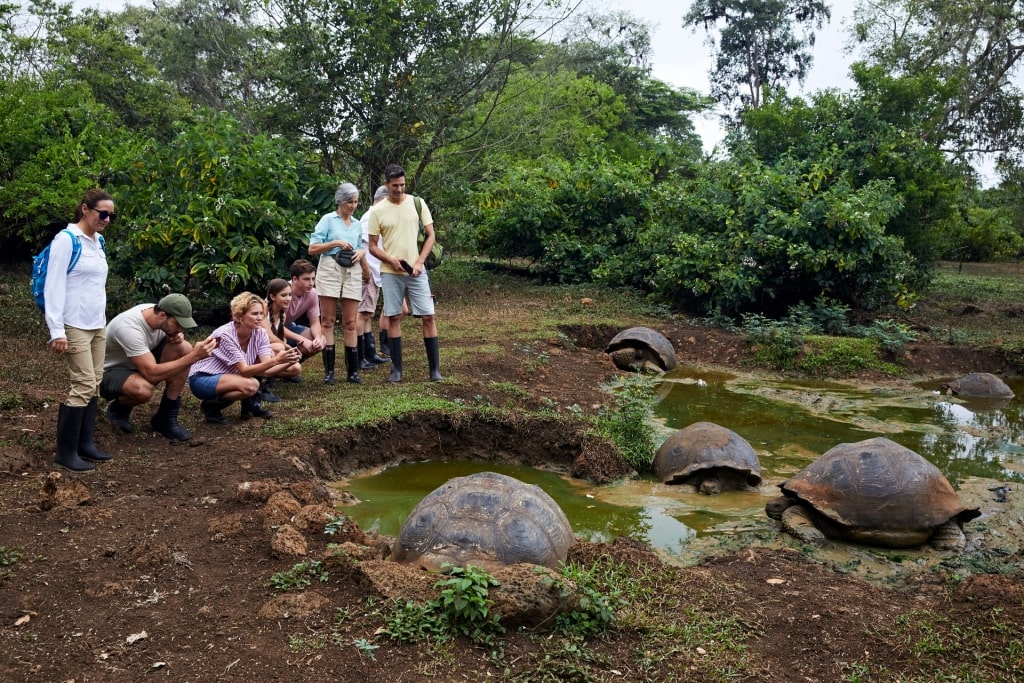
Galapagos tortoise
The Galapagos is a fantastic family destination, especially if your kids are over eight and confident enough to snorkel; this way, you’ll all get the most out of the adventure. Most likely, you’ll be tied to school vacations, which means traveling in December, spring, or during the summer. Each possibility has its benefits.
December is holiday season and is also the transition from the cool, dry weather to the hot and more humid months. The temperatures are warming up and the islands are becoming green. You’ll have a good chance of seeing giant tortoise babies and of watching juvenile waved albatross learning to fledge.
Around Easter and Spring Break, the islands are in bloom. Baby sea turtles and iguanas are emerging, and you’ll still see tortoise hatchlings, too. The water is warmer and visibility for snorkeling is excellent.
Visit during the summer vacation and you’ll experience slightly cooler, drier weather (although you’ll still need strong sunblock for the whole family), with a good chance of spotting whales and dolphins. Kids always love the sight of cute sea lion pups, too, and will be amazed at how unafraid they are.
Arrive at the end of the summer—the height of the cooler season in the islands—and you’ll have a good chance of seeing Galapagos penguins, particularly active in the waters around Bartolomé.
Best Time to Extend Your Stay
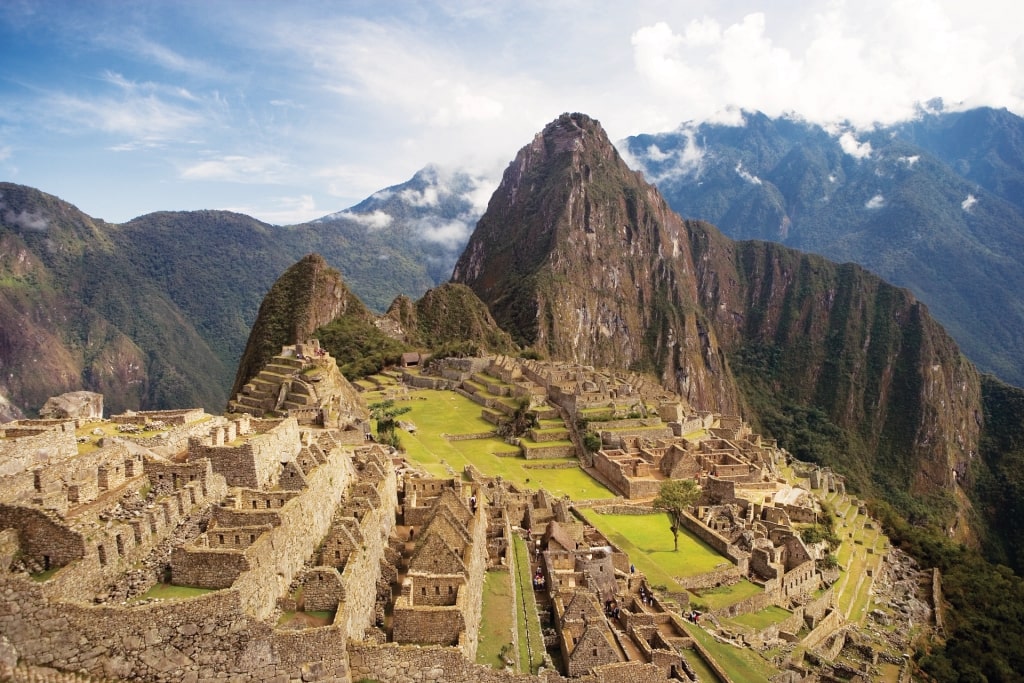
Machu Picchu, Peru
The Galapagos is easily combined with other incredible sights in South America, including the breathtaking ruined Inca citadel of Machu Picchu in Peru, and Quito, Ecuador’s enchanting capital.
If you want to extend your vacation and visit Machu Picchu, April and May are great months to explore. During those months, the mountains are emerald green and the skies a deep blue, the air sharp and clear. June to August are the coolest, driest months; daytime temperatures are a consistent 77 degrees Fahrenheit, although nights can be chilly, as low as 48 degrees Fahrenheit. This is also the most popular time to visit, so is likely to be busy.
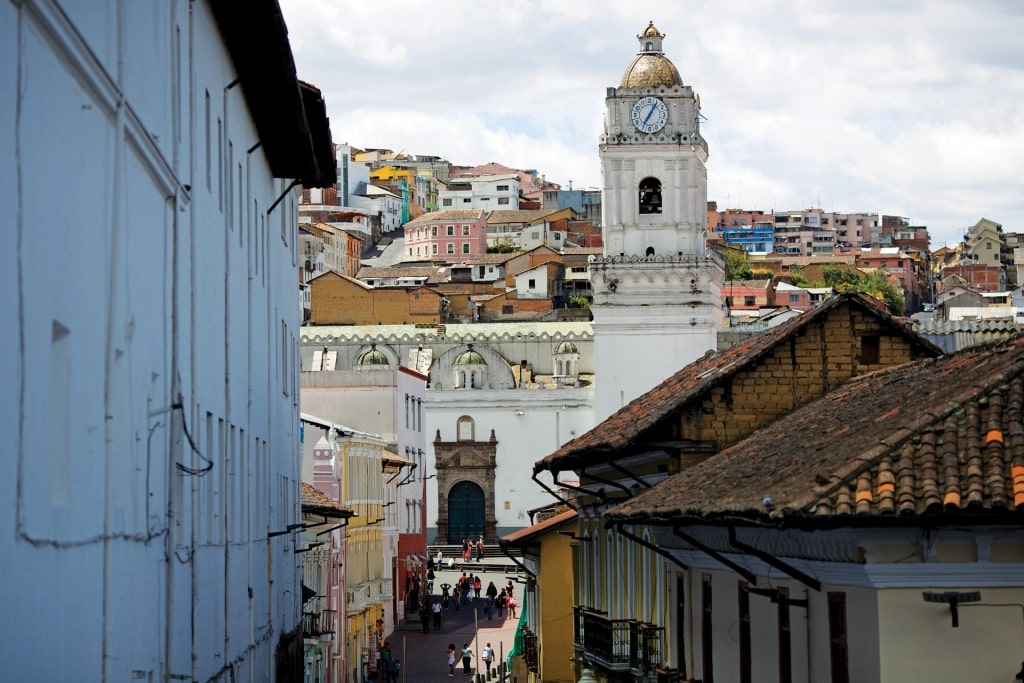
Quito
Quito, like the Galapagos, is on the Equator, so doesn’t have dramatic variations in climate. June through September is slightly cooler, with temperatures between 46F and 63F, but it doesn’t get punishingly hot here because of the city’s high altitude, at 9,350 ft.
You might want to coincide your visit with one of the city’s many festivals. Carnaval takes place the week before Lent in February or March, with colorful parades and fiestas. Semanta Sana, or Holy Week, is a more somber affair, with the main procession through Quito on Good Friday. You’ll find shops closed on public holidays like this—but being in the city for a big festival is a great way to connect with local culture.
Read: Incredible Things to Do on a Machu Picchu & Galapagos Cruise
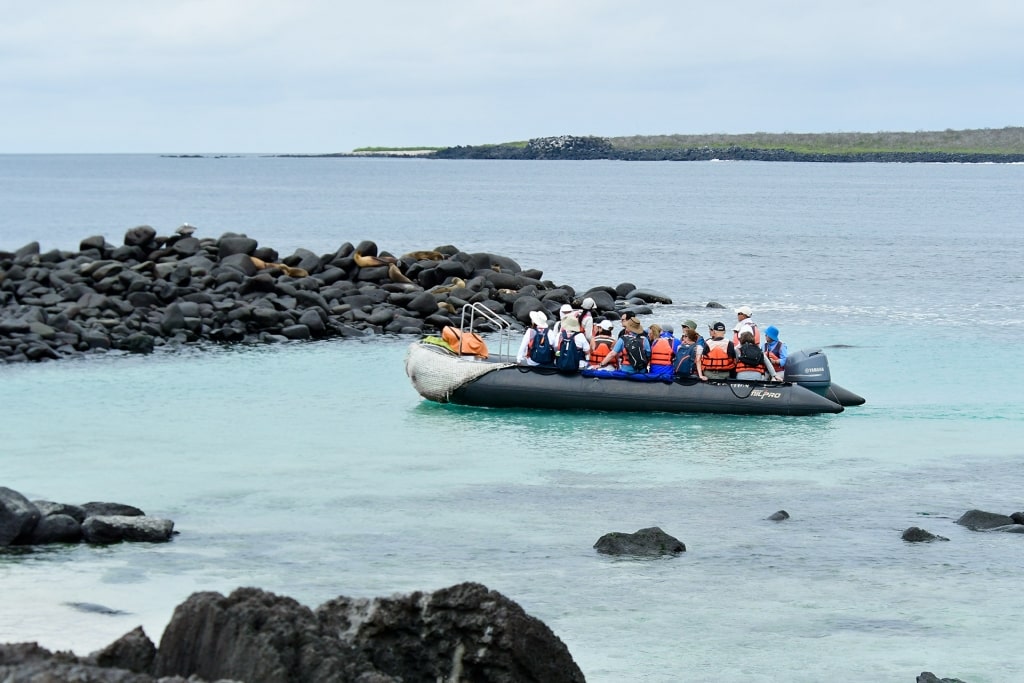
Galapagos
Whenever you choose to visit the Galapagos, you will have a life-changing experience. There’s nowhere else on Earth like this: so pristine, so starkly beautiful, and at the same time, rich in land and marine life.
Spend a week immersed in these incredible landscapes and your perspective on life will shift. Browse our range of Galapagos cruises and plan the adventure of a lifetime.
